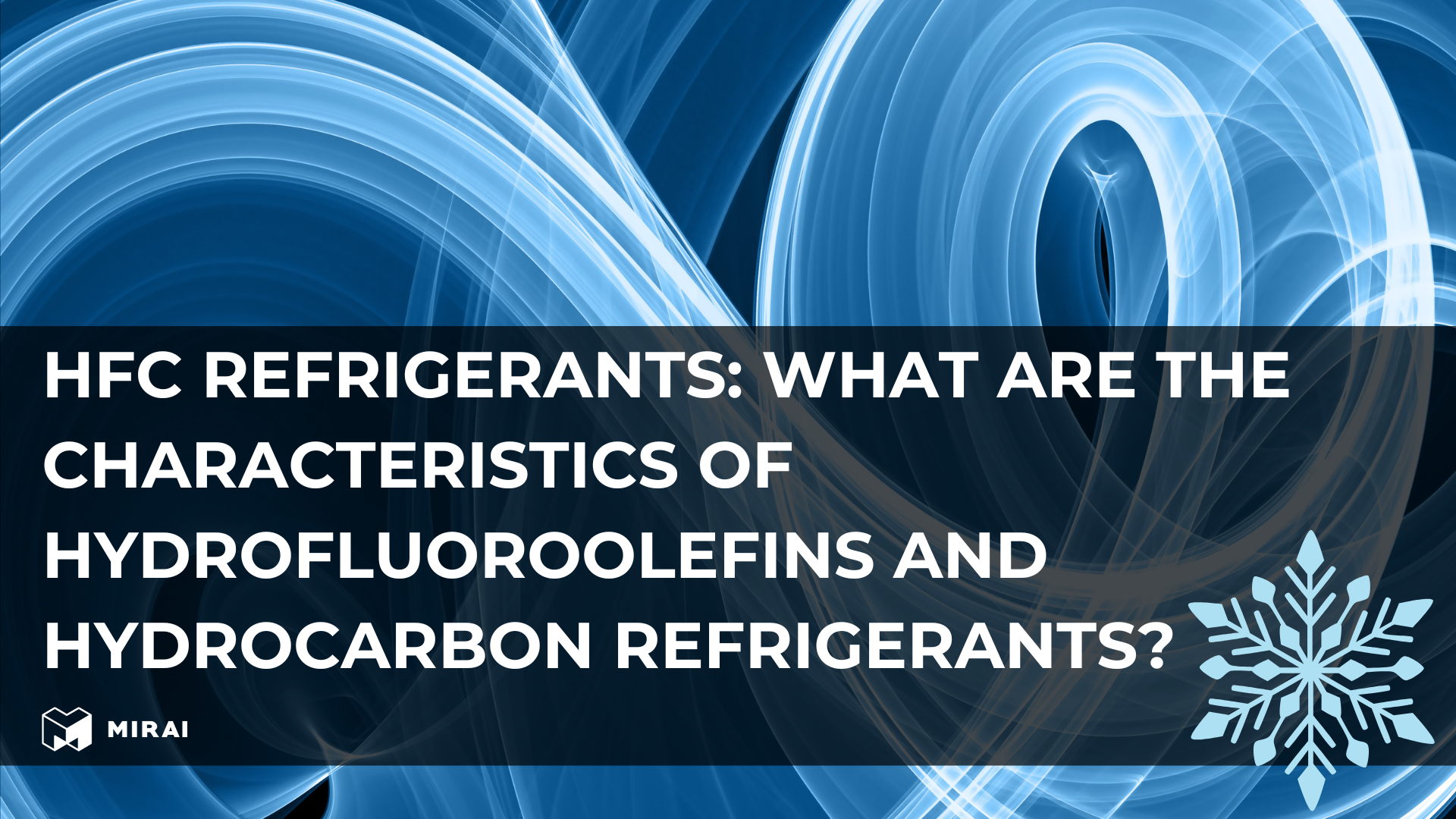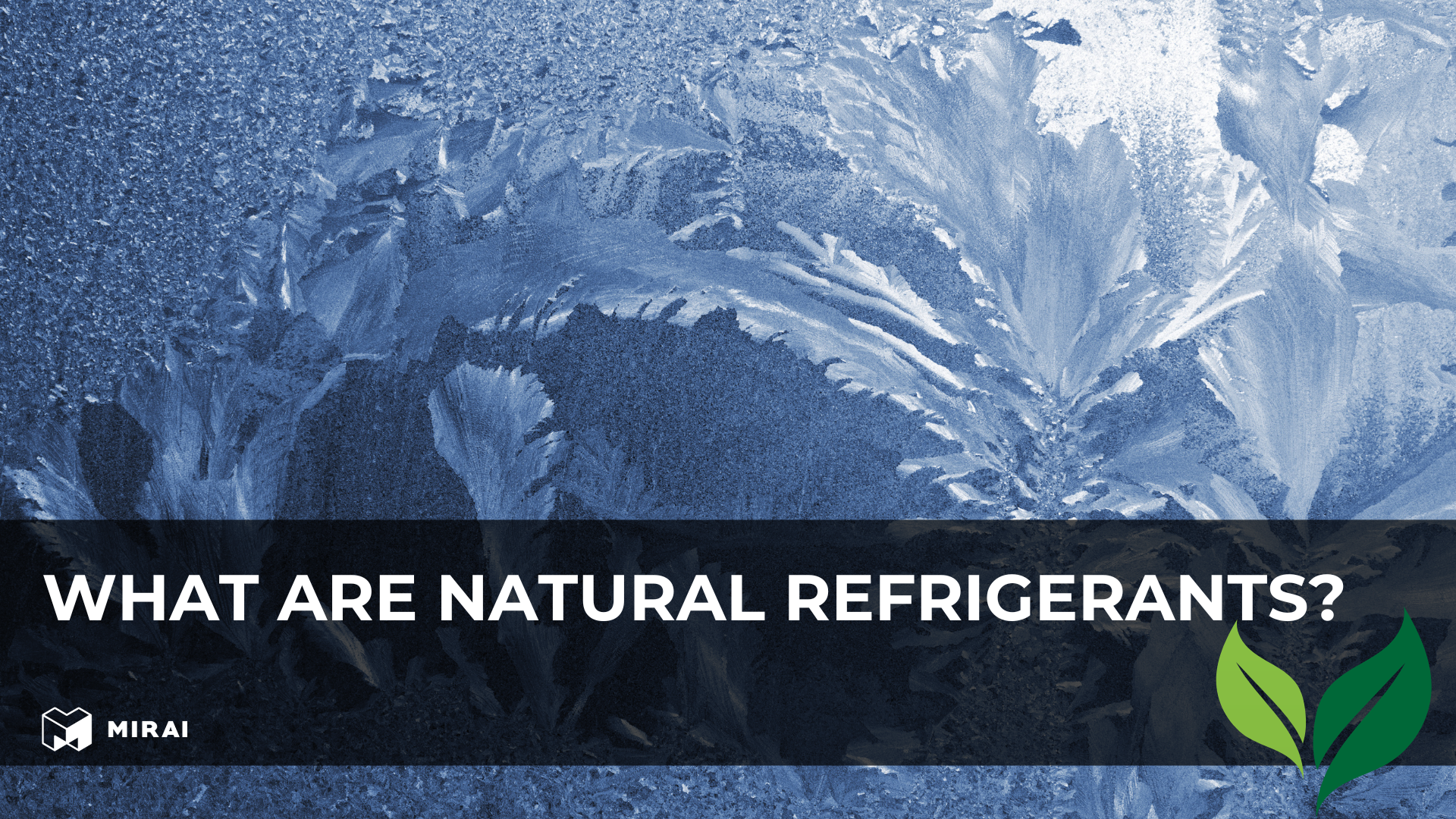What are HFC Refrigerants and What is the Role of HFCs in Ultra-Low Temperature Systems

Hydrofluorocarbon (HFC) refrigerants are synthetic gases developed for the cooling and refrigeration market that are widely used in refrigeration, air conditioners, and HVAC applications, even for mission-critical applications that require ultra-low-temperature. Largely viewed as chemical alternatives to ozone-depleting substances (ODS) such as chlorofluorocarbons (CFCs) and hydrochlorofluorocarbons (HCFCs), hydrofluorocarbons (HFCs) gained prominence post-employment of a wide-variety of regulatory approaches such as the phase-out of ODS during the Montreal Protocol.
Examples of well-known, heavily-used alternative HFC refrigerants are:
- R-410A
- R-134a
R-410A is often present in both residential and commercial air conditioning units and is regarded for its high refrigeration capacity, superior heat transfer characteristics, and high performance at low temperatures. On the other hand, R-134a is mainly utilized in automobile air conditioning systems, and in industrial refrigeration devices due to their dependability, low flammability, and operational stability across wide temperature ranges.
HFCs provide essential stability and consistency in ultra-low temperature applications used in medical and scientific equipment, biological sample preservation, pharmaceutical storage, and specific industrial processes. Due to their chemical stability, refrigeration systems using it can reach ultra-low temperatures without degradation, delivering the cooling that is necessary to focus on sensitive products and processes.
Frequencies: It is a good idea to make clear what you mean by refrigerants that are often used in refrigeration: R-22 is generally classified as an HCFC (Hydrochlorofluorocarbon) because it contains chlorine which has the potential to destroy ozone in the stratosphere. HFCs are chlorine-free and do not, therefore, directly affect the ozone. However, both the use and handling of HFC refrigerants need special attention for environmental considerations and growing regulation due to their high Global Warming Potential (GWP).
Why Does Low-Temperature Refrigeration Rely on HFC Refrigerants?
HFC refrigerants are suspect to provide distinct advantages in very low temperature refrigeration including high efficiency, non-toxicity, and small direct ozone layer damage potential since they do not contain chlorine. They are particularly well-suited for use in applications where it is essential to provide stable and reliable performance at very low temperatures, such as in medical refrigeration, laboratory equipment, and industrial cold storage systems.
Please note you are guided by data until October 2023.
Despite these benefits, HFC refrigerants are still very harmful to the environment due to their high global warming potential (GWP). GWP shows how much heat a greenhouse gas traps in the atmosphere compared to carbon dioxide. For example, refrigerants such as R-410A and R-134a have GWPs of 2088 and around 1430, respectively. While they are better for the environment compared to previous refrigerants regarding ozone depletion, their significant impact on greenhouse gas emissions indicates that their continued application needs to be cautiously managed.
Guidelines for HFC Refrigerants Maintenance and Handling
Proper safety protocols are key, as refrigerants are highly flammable, while balance is key during use and storage since leakages and loss of efficiency in ultra-low temperature refrigerants can lead to significant system issues and pose environmental risks. This requires frequent refrigeration system inspections, the use of accurate leak detection tools, proper refrigerant recovery, and various disposal regulations to be implemented by technicians. Proper maintenance of refrigeration systems helps to reduce risk leakage, enabling optimal performance at low and ultra-low temperature.
So, the HFC Refrigerants — What Are They and How To Identify Them
There are types of HFC refrigerants, each with unique properties designed for specific low-temperature use. An example would be R-134a, which is typically used in automotive and medium-temperature commercial refrigeration applications. R-410A, on the other hand, is commonly used in HVAC systems found in residential and commercial buildings, as it performs better at lower external temperatures. It is important to know the individual properties of each type of refrigerant in order to select and operate refrigerators properly. To be clear, answering common questions: R-410A is an HFC refrigerant, and a common example of an HFC gas would be R-134a.
Mirai Intex Technology: A Game-Changer for Deep Freezing
To meet such stringent environmental requirements and address the growing pressure from regulators, Mirai Intex has developed air-cycle machines with our own turbo-module and made air respond both qualitatively and quantitatively to refrigeration needs for ultra-low temperatures and at the same time to a sustainable solution. Air has zero GWP, zero ODP, and no environmental hazards unlike hydrocarbon refrigerants, hydrofluorocarbons (HFCS), and even hydrofluoroolefins. In addition, being non-flammable and fully safe, air is a great choice for ultra low temperature storage in mission-critical sectors like:
- biopharmaceuticals,
- blood plasma freezing,pharma,
- freez-drying,
- semiconductor testing and manufacturing,
- scientific resources,
- and advanced industrial processes.
The Future of Refrigerants: Exploring Air-Based Solutions
As the environmental hazards of traditional refrigerants (such as HFCs and hydrofluoroolefins) increasingly dominate the world news cycle, the refrigerant industry is steadily moving toward sustainable and eco-friendly solutions. As countries continue to ravage climate change, global regulations are the world over beginning to stage out high global warming potential (GWP) substances that are responsible for their adverse impacting. As such, the future is unmistakably heading in the direction of natural refrigerants — particularly air and carbon dioxide — regarding industry stakeholders, environmentalists and regulators.
An example of this new direction is Mirai Intex’s air-based refrigeration technology, which serves the ultra-low temperature refrigeration market. These systems, enabling maximum environmental benefits like no ozone depletion potential, zero global warming potential, and being non-flammable, hence all risks linked to flammable refrigerants are completely nullified. Moreover, cooling with air is extremely energy-efficient and lowers operating cost and energy consumption drastically.
Utilizing air as a refrigerant complies with international sustainability objectives, which is both eco-friendly and economically prudent. Mirai Intex's technology will be especially beneficial for industries that heavily depend on ultra-low temperature refrigeration, such as healthcare, pharmaceuticals, biotechnology, and specialized industrial applications. Over the next few years, air-based refrigeration systems will become the norm, both due to their sustainability credentials, compliance with legislation and performance – both at 4°C but more importantly at ultra-low temperature.

